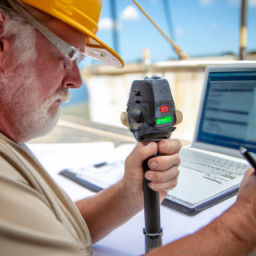
The Anatomy of a Marine Boat Survey: Step-by-Step Inspection Process
Whether you are purchasing or selling a marine vessel, marines surveys are vital in determining the condition of the boat, and identifying potential issues that may need to be addressed. Conducted by an experienced and licensed marine surveyor, such as those provided by Sun Coast Marine Surveying, these inspections are important for protecting buyers and sellers alike. In addition to being knowledgeable in the mechanical and electrical components of vessels, surveyors must also be aware of boat safety and maintenance protocols according to U.S. Coast Guard regulations. Here we will look at the step-by-step process one can expect when conducting a marine survey for a recreational or commercial vessel.
Initial Examination
A thorough marine survey is essential for understanding the condition of the vessel. To begin, the surveyor will review any available paperwork to gain insight into the history of the boat, including ownership records, receipts for maintenance services, and operating logs. This initial examination should also include a visual observation of both the exterior and interior of the boat, including the engine room, helm station, galley, living quarters, decks, and bilge areas.
During this step, the surveyor will check if all safety features are present and working properly, such as life jackets, fire extinguishers, distress flare kits, and more. They will also determine whether or not the vessel is seaworthy and compliant with applicable safety standards by noting any possible repairs or updates that could be made. The surveyor will also take note of any visible damage or signs of wear to certain areas of the boat and document any discrepancies.
Investigative Testing
This step of the inspection involves putting the boat through various tests to evaluate its performance capabilities. These tests will often comprise of a sea trial where an engineer will run the vessel in open water to observe its speed, responsiveness, stability, engine power, hull integrity, and underwater noise levels. Additionally, most surveyors will conduct some type of propulsion system testing while on land, typically with the help of specialized tools such as a powered probe that verifies engine RPMs. Other non-destructive tests may involve checking the integrity of the hull with ultrasound equipment or verifying fuel consumption rate with time trials and fuel flow readings.
Documentation Check
Surveyors rely heavily on accurate documentation to ensure they do not overlook any critical elements during their inspections. Therefore, they will need to view all onboard documents before concluding their survey. Such documents include USCG documents for commercial vessels; operator’s manuals; warranty certificates; navigational and communication equipment paperwork; title documents; registration numbers; engine/fuel information; Zinc anode surveys; and receipt histories for regular maintenance services.
Compiling Findings
Once the initial examination, investigative testing, and documentation checks are complete, it’s time for the surveyor to compile their findings. All results from each stage will be noted down within a written report that includes remarks regarding the overall condition of the vessel such as how well maintained it is, any necessary repairs or replacements needed for safety reasons, suggested upgrades and modifications for improved performance capabilities, estimated resale value, guidance in how to protect your investment (for purchasers), etc.
These types of comprehensive marine surveys conducted by professional companies like Sun Coast Marine Surveying provide buyers and sellers alike with a clear understanding of any issue points that might be brought up in negotiations or disputes. Knowing what to look for during a typical marine survey is therefore essential when looking to get the most bang for your buck out of any marine vessel transaction. r






